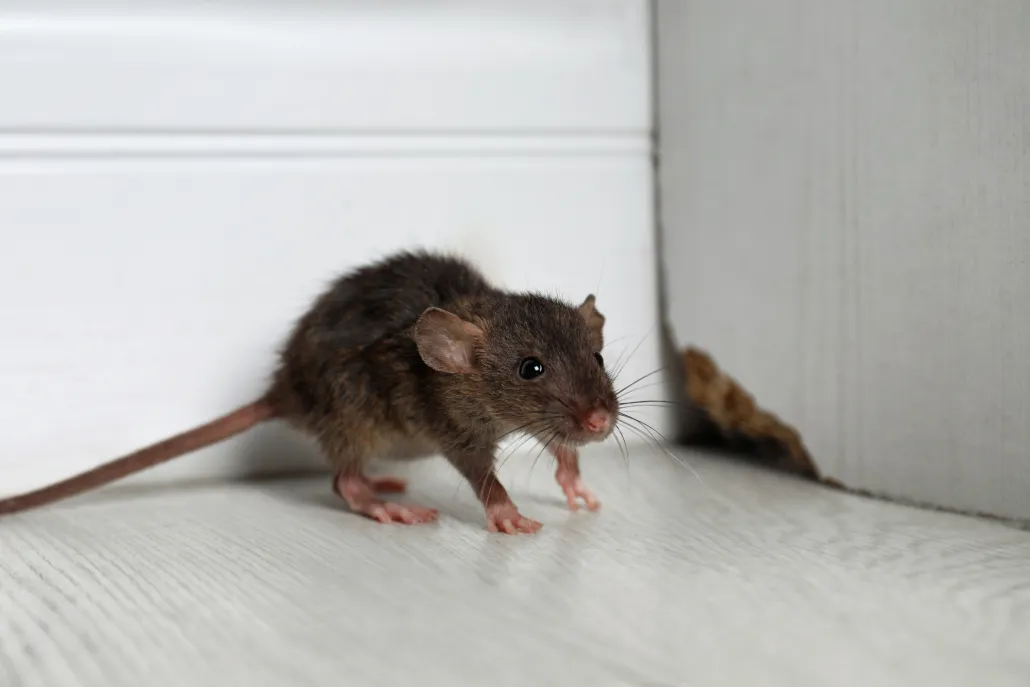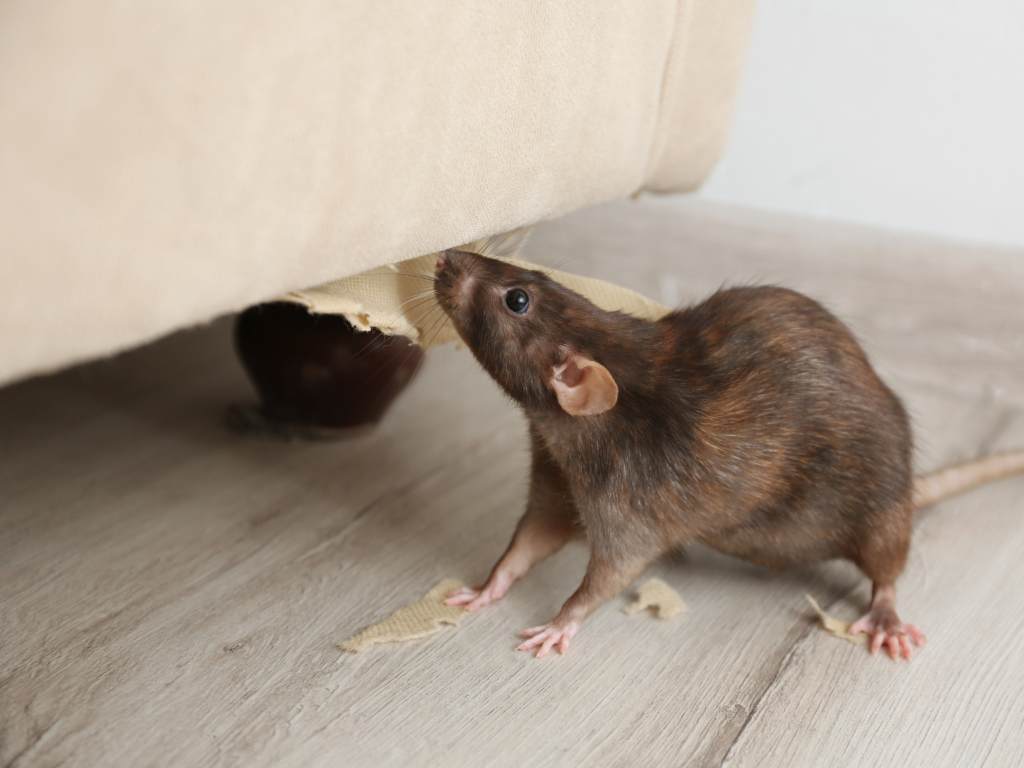Rodents, including the mouse or rat, create problems for property owners across Ohio when they gnaw on materials, leave droppings around floors or counters, and sometimes spread bacteria that compromise occupant health. In Avon Lake, where many homes and businesses enjoy moderate climates and easy access to food sources, rats or mice often find ways indoors seeking warmth or leftovers. Pest Control Xperts specializes in thorough rodent removal in Ohio, addressing everything from small mouse sightings in kitchen corners to large rat colonies hiding under floorboards. This service page outlines how mice and rats become indoor pests, the risks they bring to occupants, and why scheduling an exterminator in Avon Lake is the most efficient way to resolve infestations. By combining occupant tasks like sealing leftover food and blocking entry gaps with our professional methods, we ensure no rodent population remains to damage wires or contaminate pantries.
Many owners initially spot a rat running across a garage floor at night or find mouse droppings along baseboards, prompting immediate concern about how to get rid of rats in Avon Lake before they multiply. Others discover shredded paper nests in rarely used closets, hearing squeaks or scuttling after dark. Partial do it yourself attempts with standard poisons or traps might remove a few rodents, yet hidden pups or unblocked entry points allow new mice or rats to move in. By calling Pest Control Xperts for rodent removal in Ohio, you gain a complete inspection of potential entryways, recommended occupant steps to store or dispose of food, and carefully placed baits or traps that target the entire colony. Below, we explain why mouse or rat populations expand in local buildings, the harm rodents can cause, how to detect early signs, and how our step by step approach restores occupant comfort and health.
Why Mice and Rats Enter Avon Lake Properties
Avon Lake experiences cold winters and mild to warm summers, conditions that encourage rodents to search for indoor shelter. Whether seeking warmth in winter or easy food in all seasons, these rodents only need small cracks to slip inside. Key factors luring mice or rats into local buildings include:
- Temperature and Shelter
Cold outdoor conditions push mice and rats to heated basements, garages, or behind walls. Indoor warmth lets them breed year round if occupant tasks do not stop them. - Readily Available Food
Leftover crumbs in kitchens, unsealed cereals in pantries, or open trash bins provide abundant meals for rodents. Even minimal daily scraps sustain multiple mice or rats. - Water Sources
Minor leaks under sinks, condensation on pipes, or open pet water bowls grant rodents the moisture they need. Damp basements also support their survival. - Cluttered Storage
Stacks of cardboard boxes, old newspapers, or unused furniture let rodents build nests undisturbed. Rarely visited corners hide droppings, so occupant detection might come too late to stop large infestations. - Foundation Gaps
Rodents only need a tiny opening to enter. Worn door sweeps, holes for utility lines, or cracks in basement windows remain unnoticed if occupant maintenance is not current. - Rats or mice thrive if occupant routines let them feed and reproduce in hidden corners. Swift rodent removal in Ohio prevents deeper issues that escalate with each new litter.

Dangers of Rodent Infestations
- Health Hazards
Mouse or rat droppings harbor bacteria that contaminate floors, kitchen counters, or stored goods. Occupants risk infection if they handle these items without realizing they carry germs. Inhalation of dried droppings can also aggravate respiratory issues. - Chewing Damage
Rodents gnaw on anything from electrical wires to wooden beams. Frayed wiring poses a potential fire risk, while compromised wooden supports may weaken parts of the structure over time. - Food Contamination
Unsealed cereals or snack bags with gnaw marks end up spoiled or must be discarded, costing occupants money in wasted groceries. Businesses risk failing health inspections if rodent droppings appear in food storage areas. - Reputation Concerns
Restaurants, offices, or hotels discovered with rats or mice lose client confidence, sometimes leading to online complaints or negative word of mouth. Quick exterminator help in Avon Lake is vital to preserve brand image. - Rapid Reproduction
A few mice left unchecked quickly produce multiple pups, transforming a minor sighting into a colony behind walls or under floors. The same goes for rats, each litter compounding occupant troubles.
Clues You Need Rodent Removal
While occupant instincts might sense an issue, certain signs confirm mice or rats:
- Droppings
Small dark pellets near walls or corners usually indicate mouse activity, while larger droppings might point to rats. Fresh droppings are softer, turning dry over time. - Gnaw Marks
Cardboard food boxes, plastic bags, or wooden edges with fresh bite impressions confirm rodent chewing. Frayed electrical wires also indicate possible rat or mouse gnawing. - Late Night Noises
Rodents are mostly nocturnal, so hearing scurrying or squeaking at night behind walls or in attics strongly suggests hidden nests. - Nests
Shredded fabric, paper, or insulation bunched into secluded spots can mean a mouse or rat nest. Basements, storage closets, or unused cabinets become prime nest sites. - Foul or Musty Odor
Rodent urine or droppings produce an ammonia smell, growing stronger if multiple mice or rats occupy one area.
Acting on these signs quickly spares occupant stress and bigger repair costs.

Types of Rodents in Ohio
House Mouse
The most common indoor rodent, small and grayish, typically living in walls or closets near leftover food. House mice multiply fast and adapt well to occupant routines, requiring quick occupant or professional steps to stop them.
Deer Mouse
More rural or semi rural, deer mice have a lighter underside and often invade sheds, garages, or barns if weather extremes force them indoors. They can still contaminate stored goods or threaten occupant health with droppings.
Norway Rat
Also called the brown rat, Norway rats burrow near foundations or rummage in open trash bins if occupant disposal practices are lax. Larger droppings, bigger gnaw marks, and bolder nighttime activity set them apart from mice.
Roof Rat
Less common in certain Ohio locales, roof rats prefer higher locations like rafters or attics, climbing along utility lines or tree branches to enter. They can appear in some areas if occupant yard conditions allow easy overhead access.
All these rodents pose contamination risks and can damage occupant property if not removed thoroughly.
Why an Exterminator in Avon Lake is Best
Many occupant attempts at do it yourself poisons or traps only remove a few rodents, leaving the main nest or ignoring new mice that slip through cracks. Mice or rats also learn to avoid poorly placed traps or repeated baits. A professional rodent removal in Ohio includes:
Detailed Inspection
Pest Control Xperts checks corners, basements, attics, or behind major appliances for droppings, gnaw marks, or shredded nest material. We pinpoint how rodents enter and note occupant conditions that feed them.
Targeted Baits or Traps
We use snap traps, live traps, or tamper resistant bait stations in rodent runways. Occupants remain safe from open poisons, and rodents cannot bypass carefully positioned devices.
Sealing Gaps
Removing existing mice or rats matters little if occupant properties keep foundation cracks or worn door sweeps unaddressed. We highlight each opening occupant owners must repair.
Occupant Habits
We urge owners to store cereals in sealed containers, mop floors daily, fix minor leaks, and remove leftover scraps before bedtime. This occupant synergy denies rodents easy resources.
Follow Up
Some rodent pups or overlooked rats might appear after initial treatments. We schedule occupant watchfulness or second visits to finalize occupant peace of mind.

Benefits of Choosing Our Ant Control Service
When you’re dealing with Florida’s diverse ant population, it’s essential to work with a team that understands local conditions. Here’s what sets our service apart:
- Local Focus: We’re well-versed in the conditions around Apopka, Plymouth, and Zellwood. This familiarity ensures our strategies are designed with the local climate and most common ant species in mind.
- Comprehensive Treatments: We don’t believe in short-term fixes. We aim to address both the immediate infestation and the underlying causes that invite ants in, ensuring more durable results.
- Detailed Inspection: Identifying nest sites and pathways is half the battle. Our thorough inspection process allows us to pinpoint exactly where ants are coming from, ensuring a more efficient treatment.
- Ongoing Support: Ant issues can sometimes recur if conditions change or new colonies move in from neighboring properties. We provide recommendations and long-term strategies you can apply to keep ant numbers low.
Whether you’re a homeowner worried about ants contaminating your kitchen or a business owner seeking a clean, pest-free environment for customers and employees, our tailored ant control strategies can make a noticeable difference.
Service Areas: Apopka, Plymouth, and Zellwood
Our primary service hub is in Apopka, and we’re proud to extend our ant control solutions to neighboring communities like Plymouth and Zellwood. Each of these areas experiences its own microclimate and environmental conditions, making a general solution insufficient. By tailoring our services to the unique ecosystems of each location, we improve the likelihood of preventing re-infestations.
- Apopka: With its mix of suburban neighborhoods and natural spaces, Apopka is a prime location for ant activity year-round. We focus on identifying problem areas that might be attracting colonies, such as overgrown landscaping, standing water, or poorly sealed entry points.
- Plymouth: Plymouth’s smaller community feel doesn’t exempt it from the challenges of Florida’s ant population. Whether you live near farmland or in a cozy residential area, ants can quickly discover food sources and build nests. Our localized approach helps Plymouth residents keep ants at bay.
- Zellwood: Known for its rolling farmland and scenic beauty, Zellwood can also host a variety of ant species. The warm climate and abundant vegetation provide many nesting opportunities. Our treatments help residents maintain a comfortable living environment without ant-related disruptions.
No matter which of these communities you call home, our ant control service is designed to meet your specific needs. We understand that each property has its own layout, vegetation, and micro-climate, all of which can affect ant behavior.
Moving Forward: Creating an Ant-Free Environment
An ant infestation can be more than just a nuisance; it can pose potential health concerns, threaten property, and disrupt your daily routine. Our comprehensive ant control service aims to handle each facet of the problem, from thorough inspections to targeted treatments and practical prevention advice. By focusing on the diverse species found throughout Florida, we’re able to offer a specialized approach that truly tackles the problem at its roots.
If you’re ready to reclaim your space, we invite you to get in touch and learn more about our ant control services in Apopka, Plymouth, and Zellwood. Whether you’ve noticed a few scouts in the kitchen or encountered a full-blown colony in your backyard, it’s never too early to take action. Prompt attention can save you time, frustration, and potential damage down the road, ensuring your home or business remains comfortable and pest-free.
